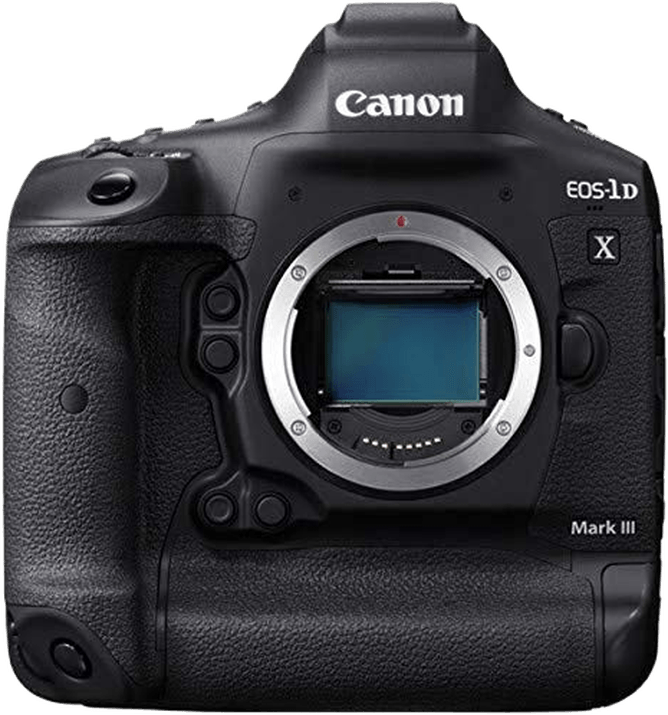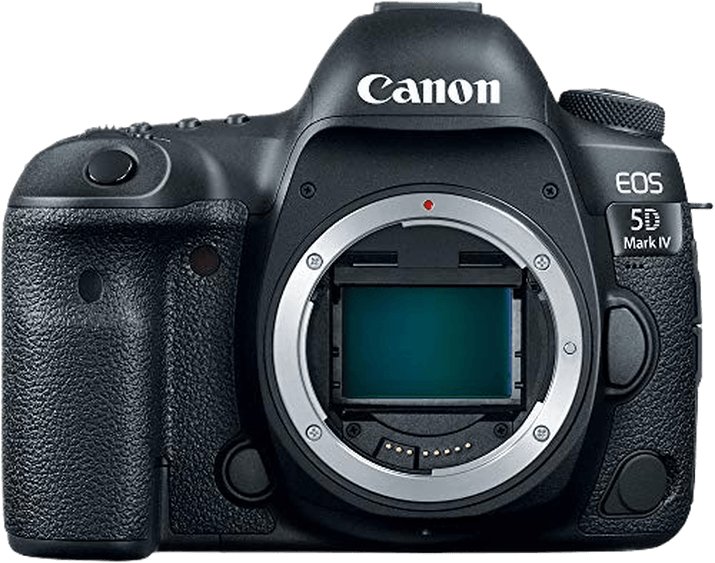Canon EOS 1D X Mark III vs EOS 5D Mark IV Comparison
Canon EOS 1D X Mark III

Canon EOS 5D Mark IV

The Canon EOS 1D X Mark III and Canon EOS 5D Mark IV are both DSLR cameras that have received a score of 75/100. Both cameras were released by Canon, with the 1D X Mark III announced in 2020 and the 5D Mark IV in 2016. They share similarities in their DSLR camera type and scores, but there are differences that set them apart.
The 1D X Mark III has an advantage in size and weight, measuring 158 x 168 x 83mm and weighing 738g, making it lighter and more compact than the 5D Mark IV, which measures 151 x 116 x 76mm and weighs 890g. This makes the 1D X Mark III more portable and easier to handle.
On the other hand, the 5D Mark IV has a lower launch price of $3500 compared to the 1D X Mark III’s $6500. This makes the 5D Mark IV more affordable, which could be a deciding factor for those on a budget.
Considering these differences, the Canon EOS 1D X Mark III may be a better option for those prioritizing portability, while the Canon EOS 5D Mark IV could be a more budget-friendly choice.
Canon EOS 1D X Mark III vs EOS 5D Mark IV Overview and Optics
The Canon EOS 5D Mark IV takes the lead in optics with a score of 76/100, slightly ahead of the Canon EOS 1D X Mark III at 74/100. Both cameras share several specifications, including a CMOS sensor, full-frame sensor size, Canon EF lens mount, and the absence of image stabilization. They also have the same DXOMARK score for the sensor at 91.
The 5D Mark IV excels with its higher megapixel count of 30.4 compared to the 1D X Mark III’s 20.1. This advantage allows the 5D Mark IV to capture more detailed and high-resolution images. Additionally, the 5D Mark IV features a Digic 6+ processor, which ensures fast and efficient image processing.
On the other hand, the 1D X Mark III outperforms the 5D Mark IV in shooting speed, delivering 20 frames per second, compared to the 5D Mark IV’s 7 frames per second. This higher shooting speed makes the 1D X Mark III more suitable for action and sports photography. Furthermore, the 1D X Mark III boasts a Digic X processor, providing advanced processing capabilities and improved performance.
To conclude, the Canon EOS 5D Mark IV offers superior optics due to its higher megapixel count and efficient image processing, making it suitable for photographers seeking high-resolution images. However, the Canon EOS 1D X Mark III provides a faster shooting speed, catering to those who require rapid action capture. Both cameras have their strengths, and the choice ultimately depends on the specific needs of the photographer.
Canon EOS 1D X Mark III vs EOS 5D Mark IV Video Performance
The Canon EOS 1D X Mark III and the Canon EOS 5D Mark IV both have a video score of 91/100, making them equal in terms of video capabilities. They share several common video specifications, including a maximum video resolution of 4K, maximum video dimensions of 4096 x 2160, a maximum video frame rate of 120fps, and built-in time-lapse functionality.
Despite having the same video score, the Canon EOS 1D X Mark III has certain advantages over the Canon EOS 5D Mark IV. The 1D X Mark III is better suited for professional videographers due to its more rugged build, faster autofocus, and better low-light performance. This makes it ideal for capturing fast-paced action or shooting in challenging environments.
On the other hand, the Canon EOS 5D Mark IV has its own merits. It is a more affordable option, making it attractive for amateur videographers or those on a budget. Additionally, it is lighter and more compact than the 1D X Mark III, which can be a significant advantage for those who prioritize portability.
In comparing the Canon EOS 1D X Mark III and the Canon EOS 5D Mark IV, it is clear that both cameras are excellent choices for video capture. The 1D X Mark III stands out for its professional features and rugged build, while the 5D Mark IV offers a more budget-friendly and portable option. Ultimately, the choice between these two cameras will depend on the specific needs and preferences of the videographer.
Canon EOS 1D X Mark III vs EOS 5D Mark IV Features and Benefits
The Canon EOS 1D X Mark III and the Canon EOS 5D Mark IV both have a feature score of 74/100, making them equal in this aspect. They share several common specifications, such as a 3.2-inch screen, touchscreen functionality, GPS, WiFi, and the absence of Bluetooth.
The 1D X Mark III surpasses the 5D Mark IV in screen resolution, offering 2,100,000 dots compared to the 5D Mark IV’s 1,620,000 dots. This higher resolution provides the 1D X Mark III with a clearer and more detailed display, which can be advantageous for photographers when reviewing images and navigating menus.
On the other hand, the 5D Mark IV does not have any specific features that make it superior to the 1D X Mark III. Both cameras lack a flip screen, which could have been useful for shooting from different angles and for vlogging purposes. Neither camera has Bluetooth, which could have offered additional connectivity options for transferring files and remote control.
Considering the specifications of both cameras, the Canon EOS 1D X Mark III holds a slight advantage over the Canon EOS 5D Mark IV due to its higher screen resolution. However, it is essential to remember that both cameras have the same feature score and share many common specifications. The choice between the two cameras ultimately depends on the individual preferences and requirements of the photographer.
Canon EOS 1D X Mark III vs EOS 5D Mark IV Storage and Battery
The Canon EOS 1D X Mark III outperforms the Canon EOS 5D Mark IV in storage and battery with a score of 87/100 compared to 71/100. Both cameras share similarities, such as having two memory card slots and lacking USB charging capabilities.
The 1D X Mark III excels with its CFexpress Type B memory cards, providing faster read and write speeds. Its battery life is also remarkable at 2850 shots per charge, using the LP-E19 battery type. These features contribute to the camera’s superior performance in storage and battery.
On the other hand, the 5D Mark IV accepts SD/SDHC/SDXC (UHS-I compatible) and Compact Flash memory cards, offering more compatibility options. However, its battery life is significantly lower at 900 shots per charge, using the LP-E6N battery type.
To conclude, the Canon EOS 1D X Mark III has a clear advantage in storage and battery performance, making it a better choice for those prioritizing long battery life and fast memory card performance. The Canon EOS 5D Mark IV, while not as impressive in these aspects, offers more memory card compatibility for users who may require it.
Canon EOS 1D X Mark III vs EOS 5D Mark IV – Our Verdict
Are you still undecided about which camera is right for you? Have a look at these popular comparisons that feature the Canon EOS 1D X Mark III or the Canon EOS 5D Mark IV:

